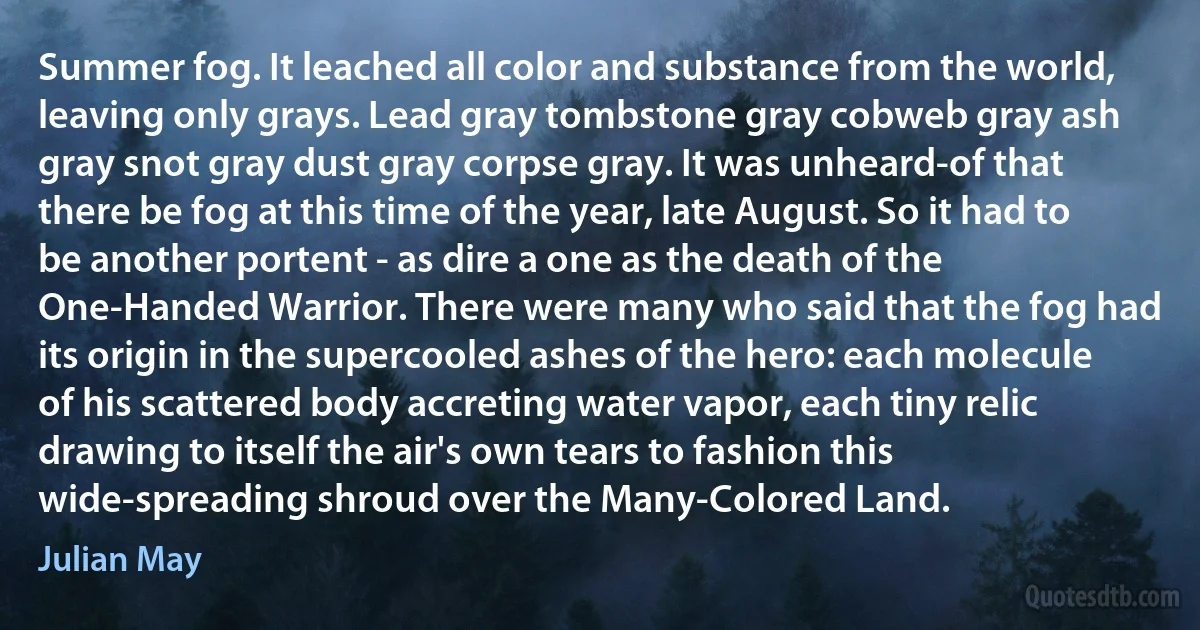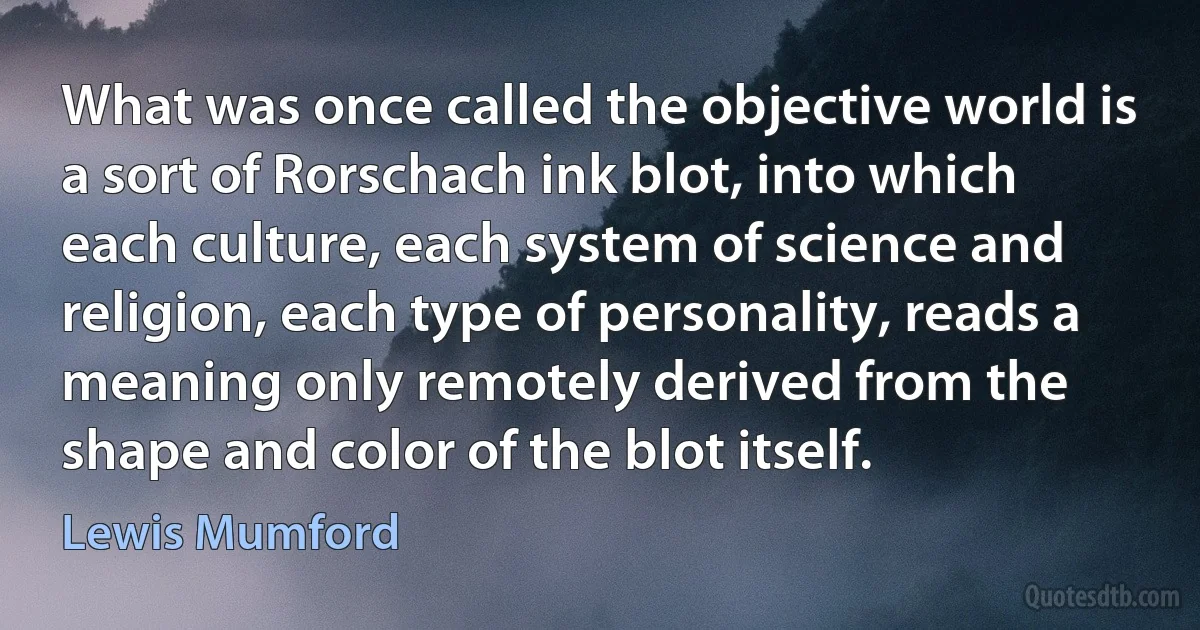Color Quotes - page 57
Each person shines with his or her own light. No two flames are alike. There are big flames and little flames, flames of every color. Some people's flames are so still they don't even flicker in the wind, while others have wild flames that fill the air with sparks. Some foolish flames neither burn nor shed light, but others blaze with life so fiercely that you can't look at them without blinking, and if you approach you shine in the fire.

Eduardo Galeano
It was just a bowl of peasant's clay, red brown in color, thickly made and rough to the touch, not perfectly round, with a small indentation on one side where the potter had damaged the unfired clay. It was worth pennies, perhaps nothing. Yet it was the greatest treasure of Christendom. And he kissed it once, and then he drew back his strong archer's right arm, ran down to the sucking sea's edge, and threw it as far and as hard as he could. He hurled it away and it span for an instant above the gray waves, seemed to fly a heartbeat longer as if it were reluctant to let go of mankind, and then the bowl was gone.

Bernard Cornwell
Without memories to cloud it, the mind perceives with absolute clarity. Each observation stands out in stark relief. In the beginning, when there's not yet a smudge, the slate still blank, there is only the present moment: each vital detail, shocked color, the fall of light. Like film stills. The mind relentlessly open to the world, deeply impressed, even hurt by it: not yet gauzed by memory.

Nicole Krauss
A new view of the role of art and science in cartography is clearly needed. It is probably a mistake to view maps as objects that contain varied amounts of scientific or artistic content for which we must determine an appropriate balance (as both Keates, 1984, and Robinson, 1952, seem to, with Keates arguing for more art and Robinson for more science). Instead, it makes more sense to consider complementary artistic and scientific approaches to studying and improving maps, both of which can be applied to any given cartographic problem. The artistic approach is intuitive and holistic, achieving improvements through experience supplemented by critical examination (where critical examination implies expert appraisal of the results of our cartographic decision-making efforts). It draws on science in using perspective, understanding of human vision, color theory, and so on.

Alan MacEachren
The idea of preaching the gospel to all nations alike, regardless of nationality, of internal divisions as to rank and color, complexion and religion, constituted the beginning of a new era in history. You cannot preach the gospel in its purity over the world, without proclaiming the doctrine of civil and religious liberty,- without overthrowing the barriers reared between nations and clans and classes of men,- without ultimately undermining the thrones of despots, and breaking off the shackles of slavery, - without making men everywhere free.

Albert Barnes
I thought scientists were going to find out exactly how everything worked, and then make it work better. I fully expected that by the time I was twenty-one, some scientist, maybe my brother, would have taken a color photograph of God Almighty-and sold it to Popular Mechanics magazine. Scientific truth was going to make us so happy and comfortable. What actually happened when I was twenty-one was that we dropped scientific truth on Hiroshima.

Kurt Vonnegut



